If your car has ever started sputtering—jerking, hesitating, or losing power—you know how unsettling it can be. Engine sputtering is a common issue that often points to problems in the fuel, ignition, or exhaust systems.
When the engine isn’t combusting fuel properly, performance drops, fuel economy suffers, and if left unchecked, it can lead to more serious mechanical problems.
The good news? Most causes of sputtering can be diagnosed and fixed—especially with regular maintenance and a bit of knowledge. This guide will walk you through the most common causes of engine sputtering and what you can do to fix or prevent it.
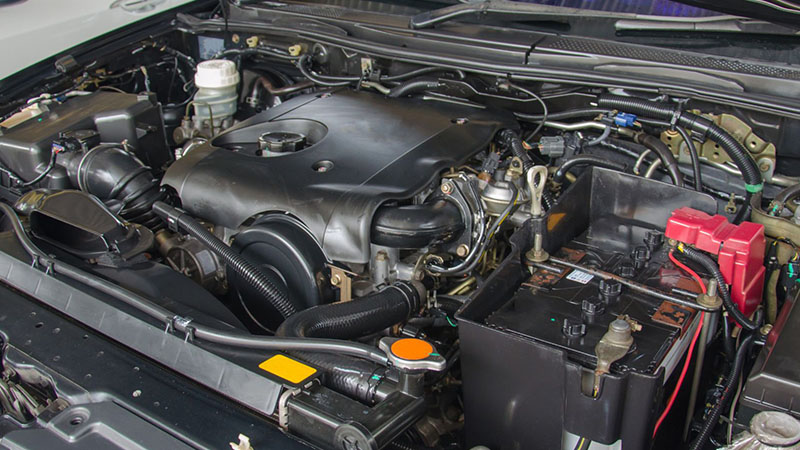
Signs Your Engine Is Sputtering
Sputtering often shows up in a few specific ways, including:
- The check engine light comes on. This is one of the most common early warning signs that something isn’t right under the hood.
- Sputtering during acceleration. Your car might hesitate or jerk when you press the gas, which is usually tied to fuel delivery or ignition problems.
- Rough idling. If the engine feels like it’s gasping or vibrating when sitting still, you could be dealing with a dirty air filter or a failing mass airflow sensor.
These signs mean it’s time to pop the hood or head to a mechanic before a small problem becomes a big one.
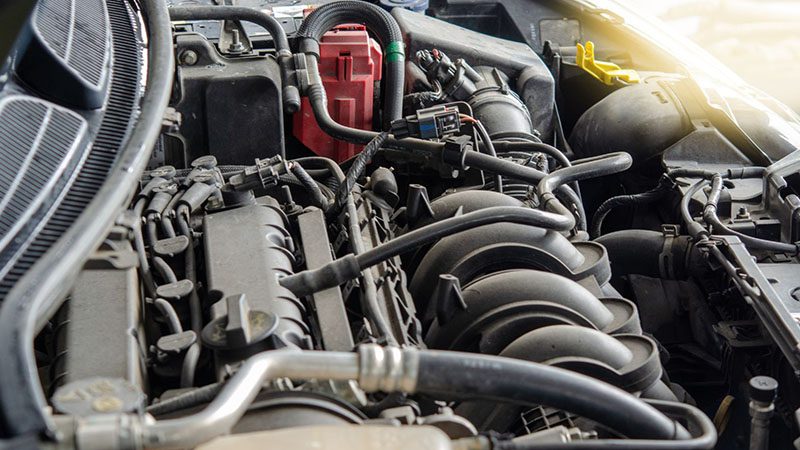
What’s Going On in the Fuel System?
The fuel system is a complex network that includes the fuel tank, fuel pump, fuel filter, and fuel injectors. These parts work together to ensure the right amount of fuel reaches your engine. When any part of the system fails or clogs up, combustion is disrupted—and sputtering often follows.
Here are a few common culprits:
- Clogged fuel filter: This limits fuel flow, making the engine work harder—or sputter.
- Failing fuel pump: Inconsistent fuel pressure can cause jerking or stalling.
- Dirty fuel injectors: If they can’t spray fuel properly, combustion becomes inefficient.
Routine maintenance like replacing the fuel filter and cleaning injectors can go a long way in keeping things running smoothly.
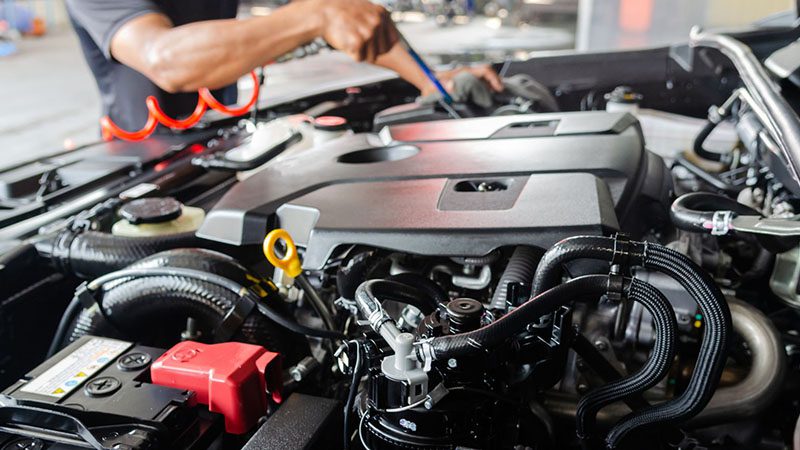
Common Causes of Sputtering
Several issues can trigger engine sputtering. The key is identifying the exact cause so you can fix it properly:
1. Ignition System Problems
Faulty spark plugs, ignition coils, or wires can prevent proper combustion. If the spark doesn’t ignite the air-fuel mixture at the right time, the engine stumbles or misfires.
2. Fuel System Issues
As covered above, any disruption in the fuel system—from clogged filters to dirty injectors—can lead to sputtering.
3. Exhaust System issues
A clogged catalytic converter or leaky exhaust manifold can restrict airflow and create backpressure, which hurts engine performance and causes sputtering.
4. Vacuum Leaks or Airflow Problems
Vacuum leaks let in extra air, throwing off the fuel-air balance. A malfunctioning MAF sensor or clogged air filter can also cause similar issues.
Getting a professional diagnostic scan can help pinpoint exactly what’s going wrong—especially when multiple systems are involved.

The Role of the Engine Control Unit (ECU)
Your car’s Engine Control Unit (ECU) functions as the brain of the vehicle—it’s a small computer that plays a huge role in how your engine runs. The ECU continuously gathers data from various sensors throughout the engine and makes real-time adjustments to ensure optimal performance.
Key functions of the ECU include:
- Managing fuel injection: It controls how much fuel is delivered to the combustion chamber based on driving conditions.
- Adjusting ignition timing: The ECU ensures the spark happens at precisely the right moment for efficient combustion.
- Regulating the air-fuel mixture: It balances oxygen and fuel levels using inputs from the mass airflow sensor and oxygen sensors.
- Controlling engine idle speed and emissions: It helps the engine run smoothly while keeping emissions within legal limits.
If the ECU receives incorrect or inconsistent data—due to faulty sensors, wiring issues, or corrupted software—it may miscalculate these settings. This can lead to a rich or lean fuel mixture, misfiring, and ultimately engine sputtering. In severe cases, a failing ECU can cause stalling or prevent the engine from starting altogether.
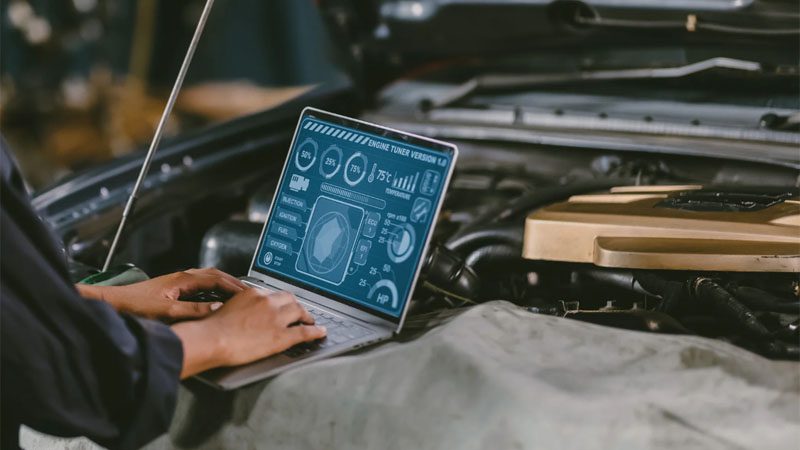
How Sputtering Impacts Performance
Engine sputtering is more than just a minor annoyance—it can signal serious underlying issues that affect your vehicle’s overall health and efficiency.
Here’s how it can impact performance:
- Reduced Power and Responsiveness: When combustion is inconsistent or incomplete, your engine struggles to deliver power. This means sluggish acceleration, poor throttle response, and a noticeable drop in performance—especially when climbing hills or overtaking.
- Increased Fuel Consumption: A sputtering engine often burns more fuel than necessary. Whether it’s due to misfires, inefficient fuel injection, or poor air-fuel ratio, your vehicle becomes less fuel-efficient, which adds up quickly at the pump.
- Higher Emissions: Poor combustion leads to more unburned fuel and pollutants being released through the exhaust. This not only harms the environment but can also cause your vehicle to fail emissions tests or inspections.
- Greater Long-Term Wear on the Engine: If left unresolved, the conditions causing sputtering—like carbon buildup, fuel contamination, or ignition misfires—can lead to premature wear of internal engine components.
Ignoring a sputtering engine means taking a gamble—not just on your vehicle’s performance, but on your wallet. The earlier you catch the issue, the simpler and more cost-effective the repair will be.
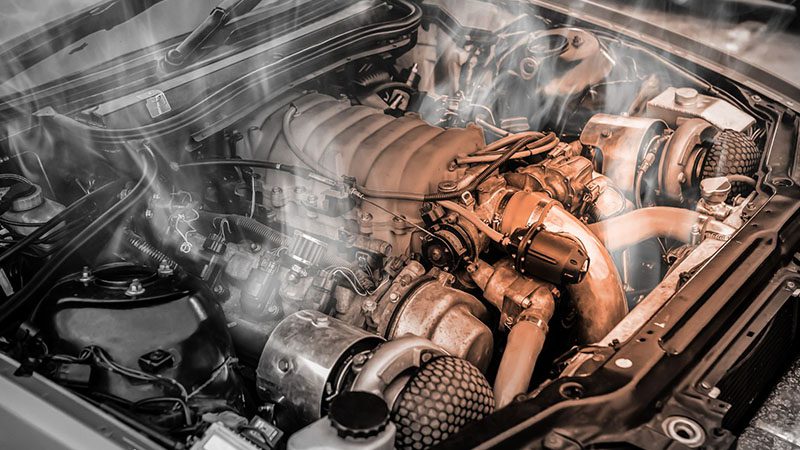
How to Prevent Engine Sputtering
The most effective way to keep your engine running smoothly is through regular, proactive maintenance. Sputtering often starts small but can quickly lead to major performance issues if neglected.
Preventive steps include:
- Change Spark Plugs, Air Filters, and Fuel Filters Regularly: These components play a vital role in combustion. Worn spark plugs can cause misfires, while dirty filters restrict airflow or fuel delivery—both common causes of sputtering. Follow your vehicle’s service schedule and replace these items on time.
- Use High-Quality Fuel: Cheap or contaminated fuel can clog fuel injectors and leave harmful deposits inside the combustion chamber. Opting for top-tier gasoline helps protect your engine and keeps the fuel system cleaner over time.
- Keep Injectors Clean: If you notice rough idling or poor acceleration, dirty fuel injectors might be the cause. Periodically using fuel system cleaners or having your injectors professionally cleaned can improve performance and prevent sputtering.
- Get Routine Engine Inspections: Don’t wait for warning lights. If your vehicle feels off or shows signs of hesitation, schedule a diagnostic check. Mechanics can catch issues early, often before they turn into costly repairs.
Minor problems—if left unresolved—can snowball into engine damage, or even complete engine failure. Staying on top of maintenance not only prevents sputtering but also keeps your engine running stronger, longer.
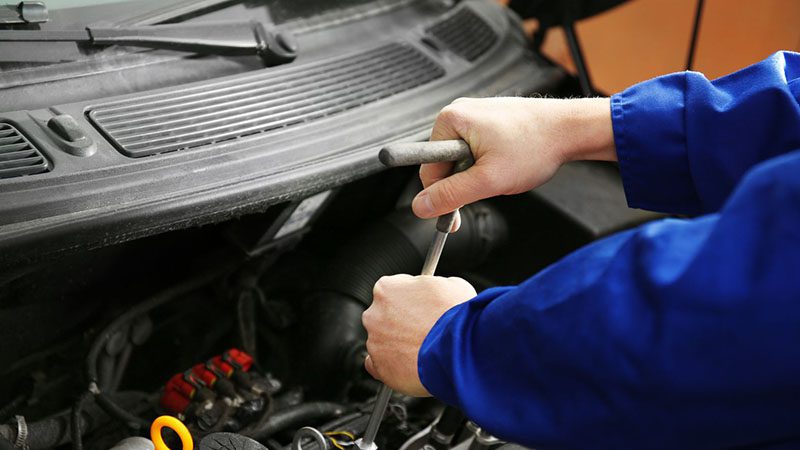
Conclusion
Car sputtering isn’t something to overlook. Whether it’s caused by faulty spark plugs, clogged filters, malfunctioning sensors, or a failing catalytic converter, diagnosing and addressing the issue early can save time, reduce costs, and prevent more serious engine damage.
If your engine starts sputtering, don’t wait—have it checked by a qualified mechanic. And if you’re committed to keeping your vehicles or customer fleet in top condition, staying on top of maintenance and fixing small problems early is key.

At Nanjing Woda Auto, we provide high-performance engine components—including complete engines, crankshafts, cylinder heads, and more—manufactured to OEM standards and ready for global export. Trusted by repair shops, parts distributors, and auto service centers around the world, our products help you deliver consistent results and keep your customers satisfied.
👉 Visit autopartswd.com to browse our product catalog or request a quick quote. Partner with us for reliable quality, competitive pricing, and the support your business deserves.





